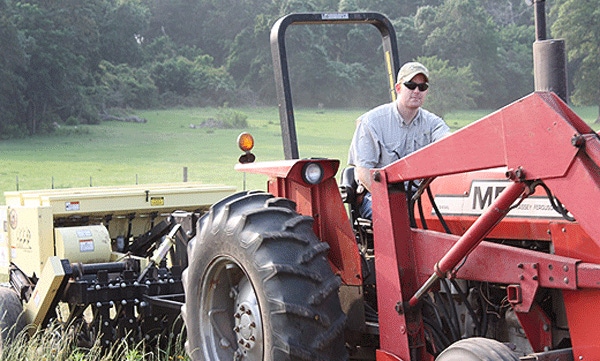June 3, 2013

Native warm-season grasses fair well during drought, and livestock and forage producers are turning to them for these benefits, NRCS scientists say.
Many landowners are converting a portion of their land to these grasses and other native plants, taking advantage of their benefits, including tolerance to drought, food for livestock, habitat for wildlife and other ecosystem services.
A native plant is one that has grown in an area since before human settlement and was not brought in more recently from other parts of the world. Natives, when planted in the right place, grow stronger and yield more benefits than non-natives.
“They are the ultimate multi-use range and land management tools because of their tremendous capabilities,” said Kyle Brazil, USDA’s Farm Service Agency National Bobwhite Conservation Initiative Agricultural Policy coordinator.
Along with the FSA, USDA’s Natural Resources Conservation Service promotes the use of native plants, including native warm-season grasses in many of the conservation activities, or practices that are used on American farms, ranches and forest operations.
Native grasses are adapted to local soils, temperatures, nutrients and rainfall making them more resilient to the effects of drought than introduced grasses.
Like the name suggests, native warm-season grasses have their peak growing rates during the summer, when cool-season grasses such as tall fescue are dormant. By filling this forage gap, the native warm-season grasses provide excellent forage for livestock and haying operations.
Because they are well adapted to their areas, these grasses are long-lasting and require little to no fertilizers, herbicides or other expensive inputs which can lead to higher profit margins for farmers and ranchers.
Roots for native grasses often grow longer than non-natives. This allows them to reach more water and nutrients, decrease compaction of the soil, increase water infiltration, and prevent soil erosion. Because of their soil and water quality benefits, more farmers are incorporating native warm-season grasses into field borders, hedgerows, buffer strips and other conservation plantings.
Native plants and grasses provide wildlife habitat and attract pollinators. Warm-season grasses often grow in bunches, which provides sanctuaries for turkey and quail young. The grasses also help pollinators, the group of critters that pollinate about 75 percent of the crop plants grown worldwide for food, fiber, beverages, condiments, spices and medicines.
“Pollinators evolved to work with native plants just as native plants have adapted to work with pollinators — to have one, you have to have the other,” Brazil said. Native plants attract native pollinators, which are often considered more efficient pollinators. By attracting good insects, birds and bats, they serve as pollinators for many of the plants that provide the food we eat.
To maximize the grasses’ positive impact, multiple species should be used. To determine the right seed mix, landowners must first find what species grow best in their soils and climate.
Past management history may also have an influence on what plants grow best and should also be considered.
Landowners can work with NRCS to determine which of these species will help accomplish their goals such as increase forage or increase wildlife. NRCS provides technical and financial assistance in integrating warm-season grasses into conservation practices.
Check out the agency’s PLANTS database for in-depth information on our nation’s plants. For more information about drought and native warm-season grasses, contact your local NRCS office.
More from Southeast Farm Press
Georgia cotton growers having tough time with thrips
Sensors designed to help growers irrigate crops only when necessary
Alabama farm leaders embrace new rural crime unit
Combat soldiers benefit from fruit, vegetable-infused rations
You May Also Like




